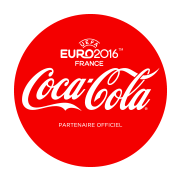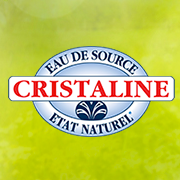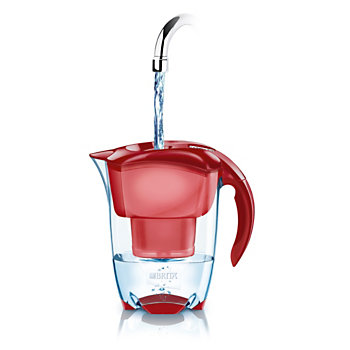This is the question I asked myself a couple of days ago… From mineral water to baby feeding bottles to convenient food packaging, we are surrounded by plastic when we want to eat or drink. If plastic is harmful for the environment, how is it safe for us? Why does some plastic claim to be « BPA-free » and how does that effect me? And is that enough?… Another burning question should we not turn away from plastic not only for our own safety but also the environment? As a concerned urbanite, I want to conserve our precious resources, but still find a balance between living right and living fast.
There’s the fantasy – in which we all have shiny, eco-friendly homes, sparkling eyes and perfect skin and hair, like Goop’y Gwyneth Paltrow. Where everything we eat or drink is locally sourced, and contained in cool ceramic or stone containers that will return to the earth, and feed new life as they decay… how dreamy!
And then there’s fact or life as we call it – Me, Mirela, looking NOTHING like Gwyneth, racing out of my door! Late for a meeting and hopping madly on one foot, as I pull on my shoe on the other. Desperately thirsty, I grab that bottle-to-go of Evian from the ‘Monop’ minimarket around my Parisian corner – and it’s Run Mirela! Run!
So you’ll get no judgement from me dear friends, as we discuss the perils of plastic-bottled beverages. Because when we’re in a hurry and need a drink, most of us reach for the convenience of that perfect-sized 33cl plastic bottle. At such times it’s, ‘Let someone else save the planet! Today, I’m in a rush!’
Perplexing Plastic
Now plastic is an unbelievably useful material in the world today. However, the fact remains that common plastic is synthesised by connecting molecules specifically derived from petroleum, natural gas, and coal among others.
Renewable? Earth-friendly? Nope! As if this was not enough, there have been studies for years now that show the ill-effects of chemicals in plastics that can seep into the food or beverage it carries and enter our bodies.
One widely reported culprit is BPA, or Bisphenol-A, an industrial chemical that is a key building block of polycarbonate plastics, and a subject of much heated debate since 2008. So why is BPA bad? We still don’t really know 100%, since we don’t have definitive studies of its full effects on people yet. Key studies are done on animals and hence not fully conclusive and also long term studies are missing. Also only recently we got our first insights into our aggregated BPA exposure- the sum of all BPA consumption through different routes (diet, dust, cosmetics, …).
What we do know is that BPA is a hormone-disrupting compound. In some studies it has been linked to breast cancer, early puberty, infertility and such health problems and there are subsequently questions about its potential impact particularly on children’s health and the environment (Source). Read here for a comprehensive viewpoint on BPA by the European Food Safety Authority (EFSA). EFSA is currently re-evaluating the potential effects of BPA on the immune system in light of new evidence and a request from the Dutch Ministry of Health (Source). So we are staying tuned and will update you dear readers as soon as there is some concrete information.
Phthalates are other bad guys. These are used to make products more pliable and it is difficult to protect from them as they are used everywhere from household cleaners to food packaging to fragrance, cosmetics, and personal-care products (Source). Their use has been debated since 2003 and researchers have found since then links to asthma, attention-deficit hyperactivity disorder, breast cancer, obesity, type II diabetes, fertility issues and even low IQ! Good news for Europe is that their use has been strongly restricted since 2015, but this is not the case for imported products and also Phthalates may be present in old products that we continue to use (Source).
Why do companies persist in using plastic for their packagings?
Plastic is not plastic
First of all, in order to answer the big question we need to differentiate which plastic we are talking about. There are several types of plastics and some are supposedly ‘safer’ than others. Plastic products are marked on the bottom with a number enclosed by the recycling symbol. This symbol is used to identify the plastic and recyclability of the product. You can find a comprehensive guide here. In general plastic products marked with the numbers 2, 4 and 5 are the safer choices:
But is it always so simple? There are debates on how safe is drinking water in a PET bottle left in a hot car. Re-used PET poses other health risks coming from other toxins. While some say it is safe – other say not, so we recommend just make sure your PET water bottles are not temperature abused and for the sake of prevention, use PET plastic number 1 one time only. So I will now privilege a nice glass bottle for my daily detox lemon water that I earlier used to drink over the day in a re-used PET water bottle.
As clear as glass. But how clear is that?
During our investigations we consulted American and European health experts and other ‘Meisters’ and it was often recommended to switch to glass bottles in every day use vis-a-vis plastic. Glass is indeed the safest version as it does not leak at all.
We all remember Perrier being available in glass bottles, but here’s what their site says: “In the 2000s, the natural sparkling mineral water became available in 100% recyclable PET bottles.” (Source)
So if glass is a much better option as far as health is concerned, why does Perrier want to abandon it and other brands not want to use it? Before you curse Perrier and other big business brands for ditching glass for plastic… here’s a quick fact:
When it comes to recyclability, PET scores over glass. Surprised?
According to the Jan 2013 issue of International Journal of Lifecycle Assessment, glass beverage bottles have the highest adverse effect on the environment, including global warming.
Re-using a glass bottle lowers its carbon footprint by three times to roughly that of a single-use plastic beverage bottle. But a glass bottle must be reused 20 times to make its carbon footprint comparable to a plastic bottle that gets recycled. Read more here.
So while producing common plastic involves using non-renewable resources, it still scores more points as compared to glass, in ease of its recycling, and overall cost to companies (and us). Glass doesn’t look so guilt-free now, does it?
The manufacturers confirm that PET offers today the best ‘green’ mix:
 Coca Cola
Coca Cola
« More than half of our global volume today is delivered through PET plastic beverage bottles, which consumers prefer for lightweight, shatter-resistant, resealable, cost-effective and recyclable packaging.
By sourcing more of our global system PET from renewable and recycled sources, we can continue to offer these benefits while helping to reduce our environmental footprint. …
An extremely small amount of BPA can be found in (the lining of) our aluminium cans. We also sell beverages in PET plastic and glass, which don’t contain BPA. All our products and packages are safe.”
Read more here and here and you can ask questions to Coca Cola on Twitter with #plantbottle.
 Roxane (makers of Cristaline water)
Roxane (makers of Cristaline water)
“In 1992, when it decided to replace PVC by PET, the bottled water industry started a market revolution!
This new packaging material is completely neutral and contains neither bisphenol A nor phthalates. In 2009, ROXANE decided to make a more direct contribution to recycling by opening its own preform production plant using recycled PET.” (Source)
To BPA, or not to BPA
No let’s go back to the BPA discussion to be able to answer the big question of the article. Plastic n° 7 is the tricky one where they may or may not be BPA. It is commonly used to label Polycarbonate (PC) which is derived from BPA. This is also a reason why BPA was so intensely discussed, because there baby bottles out of PC. Now good news is that it has been banned for use in baby bottles by the European Union, the United States and Canada, and from all food containers in France.
However, the final scientific opinion by the EU on BPA is scheduled for completion in 2018 (Source). Of course, the beverage industry and BPA Coalition are very strongly debating these health scares. One very interesting note the BPA Coalition makes is that:
“The safety level is actually high: In order to exceed the TDI recommended by the European authorities in 2015, someone would have to eat daily: 12 kilos of canned vegetables + 3.5 kilos of prepared meals + 88 litres of beverage cans. That’s indeed a lot!” (Source)
What’s a responsible UrbanMeister to do then? Continue drinking water out of PLASTIC?
Results of research are either contradictory or important research is yet to come. Until then, we prefer to follow the leitmotiv « Prevention is better than cure »:
- Drinking out of PET bottles is ok, but do it occasionally – for both your health and the planet’s health. Get inspired by urbans like Gilles and Bianca who try to go Zero Waste here.
- A single-use plastic water bottle is generally made of PET plastic of group n°1. It is lightweight, but not designed for re-use. So do not re-use it, but use a pretty glass jug at home. Regardless of what plastic you use, do not expose it to high temperatures (microwave, dishwasher).
- Contrary to other packaging materials, PET is 100% recyclable. Thus, each used bottle can be re-processed to make a new bottle. So make sure to discard it in the dedicated recycling bins. It is such a small easy thing to do but has a great good impact.
- In countries where tap water is safe for consumption like in Europe & US, go for tap water! To guarantee purity and in regions with excessive lime, go for jugs with charcoal filters like our recommendation from BRITA. Brita has come up winners in several tests and consumer evaluations thanks to the best mix of filtering efficacy, convenience, design and price (Read for example here).
- Watch-out with class number 7 plastic, e.g. refillable plastic water bottles that are made of a hard, rigid plastic such as polycarbonate. Go for BPA-free solutions. These days there are many stainless steel or high-safety grade plastic super-stylish bottles, take a look at some chic options here like the one below from MEMOBOTTLE, all BPA free 🙂
Now we would wish that the stainless steel bottles were made out of recycled material but that’s not yet the case. Read here more from our friends from Treehugger.
At a macro level, we can consume smarter and give green and innovative start ups a chance- ones which are trying to develop truly sustainable replacements to glass and plastics. Our keen UM trendspotters have the following ‘unsusual suspects’ for your consideration.
- Agar Plasticity (Grand Prix winner at the Lexus Design Award 2016) Exploring the potential usefulness of agar (a seaweed) as one of alternatives to synthetic plastics. Discover more here.
- Mycelium products. Researching fungi to grow fully bio-degradable materials, check out here an example & and another one here.
- Green Diamond Bags, the only lead-free, Triclosan-free, AP-360®-protected reusable shopping bag. Read more here.
- Edible wrapping. Food packaging that mimics the properties of petroleum-based food wrapping, without the environmental concerns – Get more info here & do check out this.
We hope we’ve been able to uncover some important insights on plastic consumption for you to make responsible life choices.
Till next time, Reuse, Recycle, and Reduce!




![[ALERTE GREENWASHING – CHAMBRE ENFANT] Les conseils pratiques d’un père engagé](http://urbanmeisters.com/wp-content/uploads/bfi_thumb/dummy-transparent-pyhloyclal4p5ty8tb4matytlyd4xyugzcd2z17fr6.png)